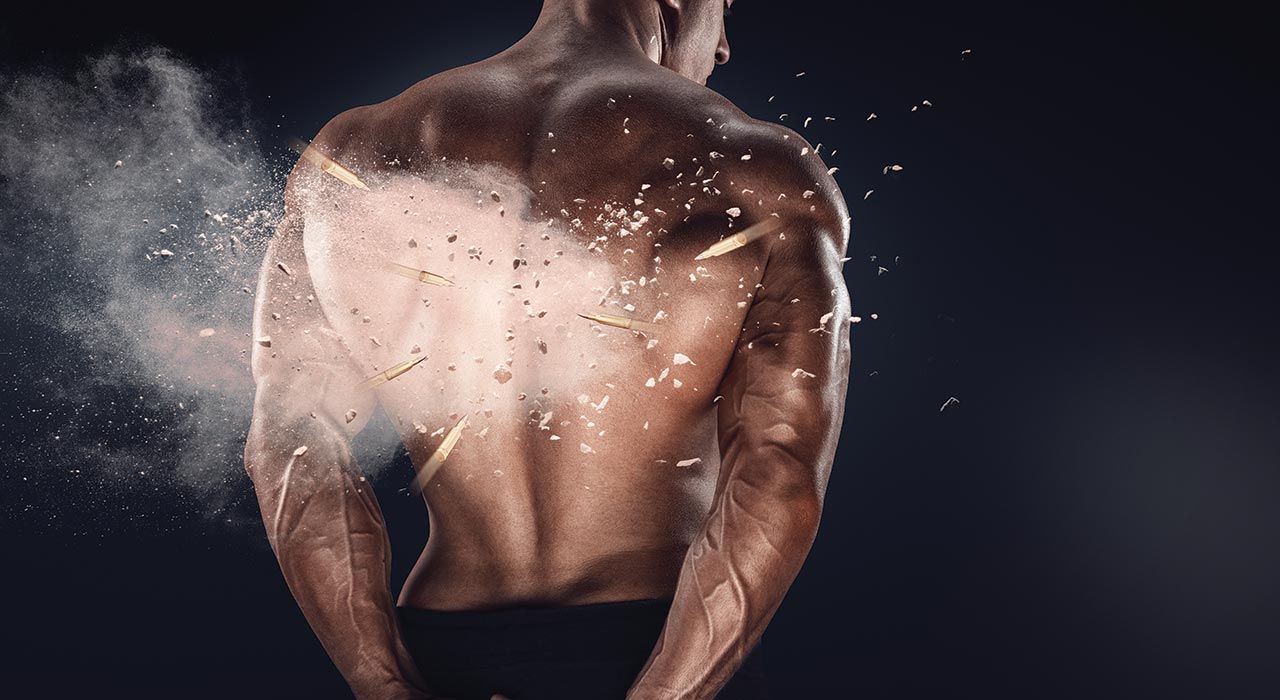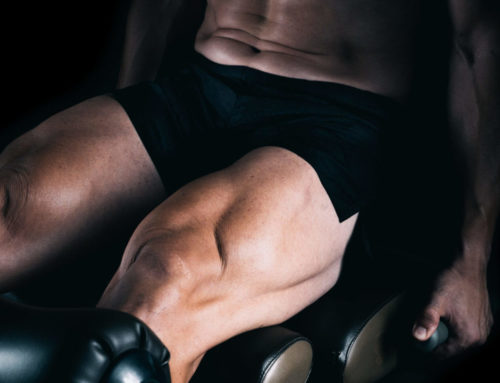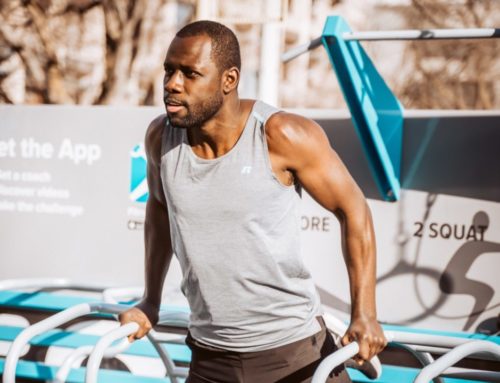If you want a physique that can push big numbers while remaining injury-free, you don’t need more weights. You need to get familiar with the more advanced – and difficult – lessons to be learned from bodyweight training.
Anytime a coach suggests bodyweight training, most serious lifters think of the typical ho-hum, push-ups, pull-ups and planks. Not that there’s anything wrong with those moves, but you may suspect your training has got those elements comprehensively covered. To a large degree you’d be right, however that’s because your bodyweight imagination has been limited and there are different angles to this technique that will prove incredibly humbling. Keep reading to learn the real bodyweight moves that will seriously challenge your years of experience in the gym. Use the lessons – because they’ll teach your body to become stronger, more resilient and better in every way.
Head, neck and upper back
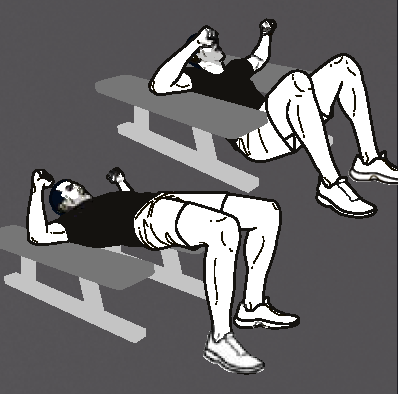
THE BACK PLANK
You might think that because you can single row the biggest dumbbells on your gym’s rack, you’re fine. But when movement takes a back seat and your back is asked to perform an isometric hold, things change in a hurry. This is tough.
How to do it
A) Sit on the floor between two benches that are the same height. Place your elbows and triceps on the benches, clench the fists, and make sure the knuckles face the ceiling.
B) Plant your feet on the ground and push your hips up, driving your elbows and upper arms into the bench as hard as possible. Retract the shoulder blades as best you can and keep the ribcage high. Aim to hold yourself as high off the ground as possible, and start with 4-6 sets of 10-15 seconds.
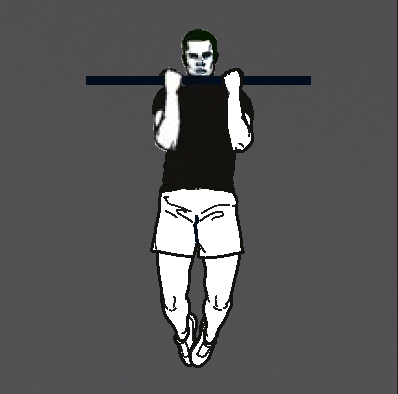
FLEXED ARM HANG
The good old flexed arm hang has changed since you did it in grade-11 gym class. Now you’re a grown man, probably 20kg heavier. What’s more, you have a better handle on technique – so you can make this a movement that really blasts your upper back.
How to do it
A) Grab a pull-up bar and get yourself to the top position.
B) Once you’re there, you should have the best quality pull-up finish position locked in – that means your shoulders are pulled down and back, your elbows are tucked tight to the body, your chest is up, and your chin has cleared the bar. It’s your job to hold this position with no assistance, for 15-20 seconds. Aim for 5 rounds, and rest for 90 seconds between rounds. You’ll be surprised at how much end range contractile strength you start to forfeit as you fatigue.
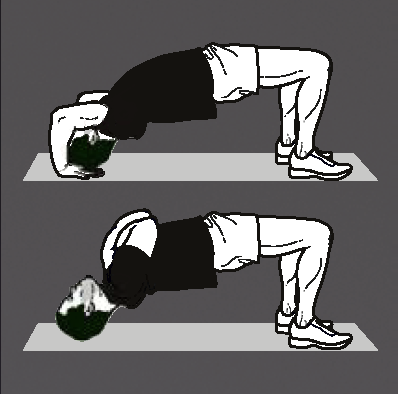
NECK BRIDGES
The strongest part of any lift isn’t the lifting, but the lowering phase. That’s where the strongest muscle fibers work the hardest, and it’s the reason everyone can lower more than they can lift. Remember – the neck is a delicate area to train. Be sensible.
How to do it
A) Set yourself up on a double mat while lying face up. Assist yourself into a head bridge using your hands to support your way up on the mat.
B) Carefully move the hands away (or release the pressure so they’re nothing more than a guide), and lower your body slowly, resisting the path with your neck. For this movement, keeping the reps low is the key. Focus on sets of 5-8 reps, and rest 60-90 seconds between sets.
True leg power
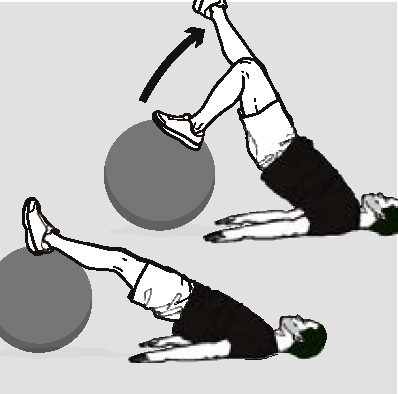
2 AND 1 HAMSTRING CURLS
Think you’ve got tough hamstrings? Well, you can make them really burn with the 2 and 1 hamstring curl. For this bad boy, all you need is a stability ball.
How to do it:
A) Lying on your back and assuming a typical Swiss ball curl start position, raise your hips off the ground, squeeze the glutes, and pull the ball into your body with your heels.
B) With the ball still tucked, raise one leg, and return the ball slowly to a full extension with the leg that’s still on it. Aim for a 3 second return phase. Focus on sets of 8-10 reps per leg – and feel the burn! Rest for 90-120 seconds between rounds.
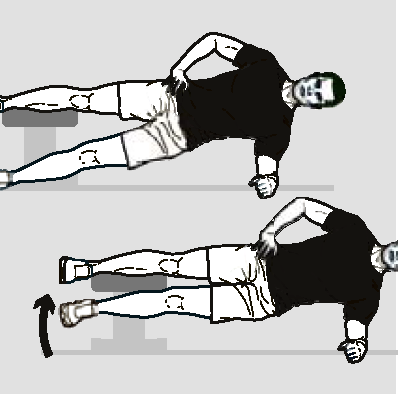
SIDE-LYING ADDUCTION
Side-lying adductions are the most brutal inner thigh exercise out there and double as a way to hit the obliques in a side plank. Do these and never use the seated adductor machine again.
How to do it
A) Find a box that’s no higher than 24 inches. Lying on your side, place one leg on top of the box, and one leg under, held straight. The top leg can be bent. If it’s hurting.
B) Supporting yourself with your forearm in a side plank position, press hard into the box with your top leg and raise your hips off the ground, while bringing your bottom leg up to meet your top leg. Hold the top position, then let yourself down. Focus on three sets of 8-12 reps, . Rest for 90-120 seconds between sets. Trust me – that’s all you’ll need.
Real world core strength
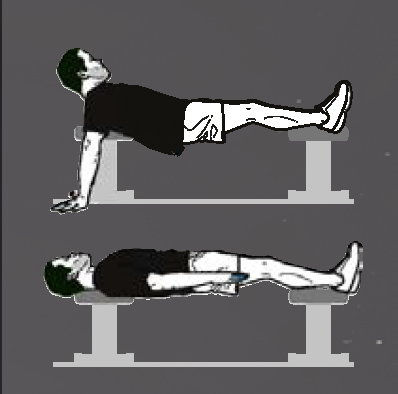
THE CHINESE PLANK
In this move you’ll flip the script on your traditional planks and light up your posterior chain with the Chinese Plank. It’s a move that’s rarely spoken about which is a huge shame because it over delivers on results.
How to do it
A) Instead of planking the normal way, stabilize yourself, by placing your shoulders and heels, between two benches, which allows you to really hit the posterior chain and expose weaknesses in it.
B) Keeping high hips and contracted glutes is key, because failing to do this will cause instant lower back stress that you’ll notice. It keeps the movement honest.
As a bonus, you can break the bodyweight rules here by making one addition. Slowly press a pair of dumbbells using a neutral grip while holding the plank for a dual benefit. Focus on sets for time, however, rather than a set number of reps. 30 seconds is a great place to start.
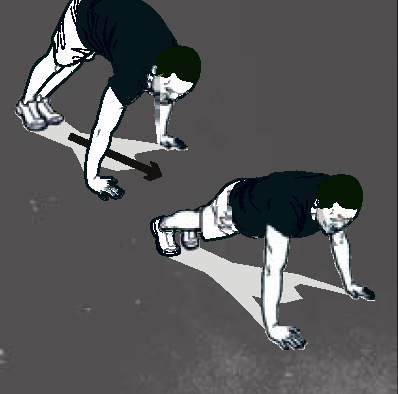
WALK-OUTS
Hand walk-outs are a fantastic progression to standard roll-outs because they’re performed from the toes. Most ab wheel roll-outs are done from the knees, and are too hard for the average lifter to perform from the toes, especially if they have long levers and tall bodies. Hand walk-outs allow a lifter to control his extension and brace the core while gradually moving into greater extension overhead. And the knees never touch the ground.
How to do it
A) Stand with your feet approximately shoulder width apart, and plant the hands on the ground with straight arms wherever comfortable in front of the feet.
B) Walk the hands away from the body, with minimal bend in the elbows. At a comfortable extension that’s beyond a typical push-up position, hold the long-lever plank for a three-second count, and then walk back in, to standing position.
Focus on sets of 6-8 reps, and rest for 90 seconds between rounds.
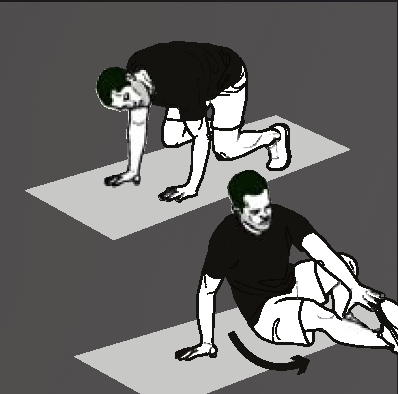
TIGER SIT-OUTS
The sit-out is another deceptive movement that looks much easier than it is – especially if you’re a guy who carries a lot of muscle. This asks for timing, coordination, core and hip strength, mobility, and flexibility – all rolled into one smooth-looking exercise.
How to do it
A) Starting in a quadruped position, keep the knees bent at 90 degrees and two inches away from the ground (the “bear stance”). Lift your right foot and left hand, and turn your body to face the roof, using your left foot as the pivot point.
B) Kick across with your right leg, aiming to your left. Return to start position and repeat. Aim for sets of 6-10 reps per direction. Rest 90 seconds between sets.
PUTTING IT TOGETHER
The natural question is, how do we arrange all of these movements into a comprehensive workout that’s challenging enough to bring out the best in you? The answer is simple: use supersets. Doing so can make it look something like this:
| Excercise | How long? | Rounds | |
|---|---|---|---|
| A1 | Neck bridges | 6 reps | Perform 3 rounds |
| A2 | Hand walk-outs | 6 reps | |
| B1 | 2 and 1 Hamstring curl | 8 reps/leg | Perform 4 rounds |
| B2 | Flexed arm hang | 20 seconds | |
| C1 | Chinese plank | 30 seconds | Perform 3 rounds |
| C2 | Side-lying adduction | 8 reps/leg | |
| D1 | Back plank | 15 seconds | Perform 4 rounds |
| D2 | Tiger sit-out | 8 reps/side |
EXPERT: Lee Boyce – strength trainer, former athlete and owner of www.leeboycetraining.com


